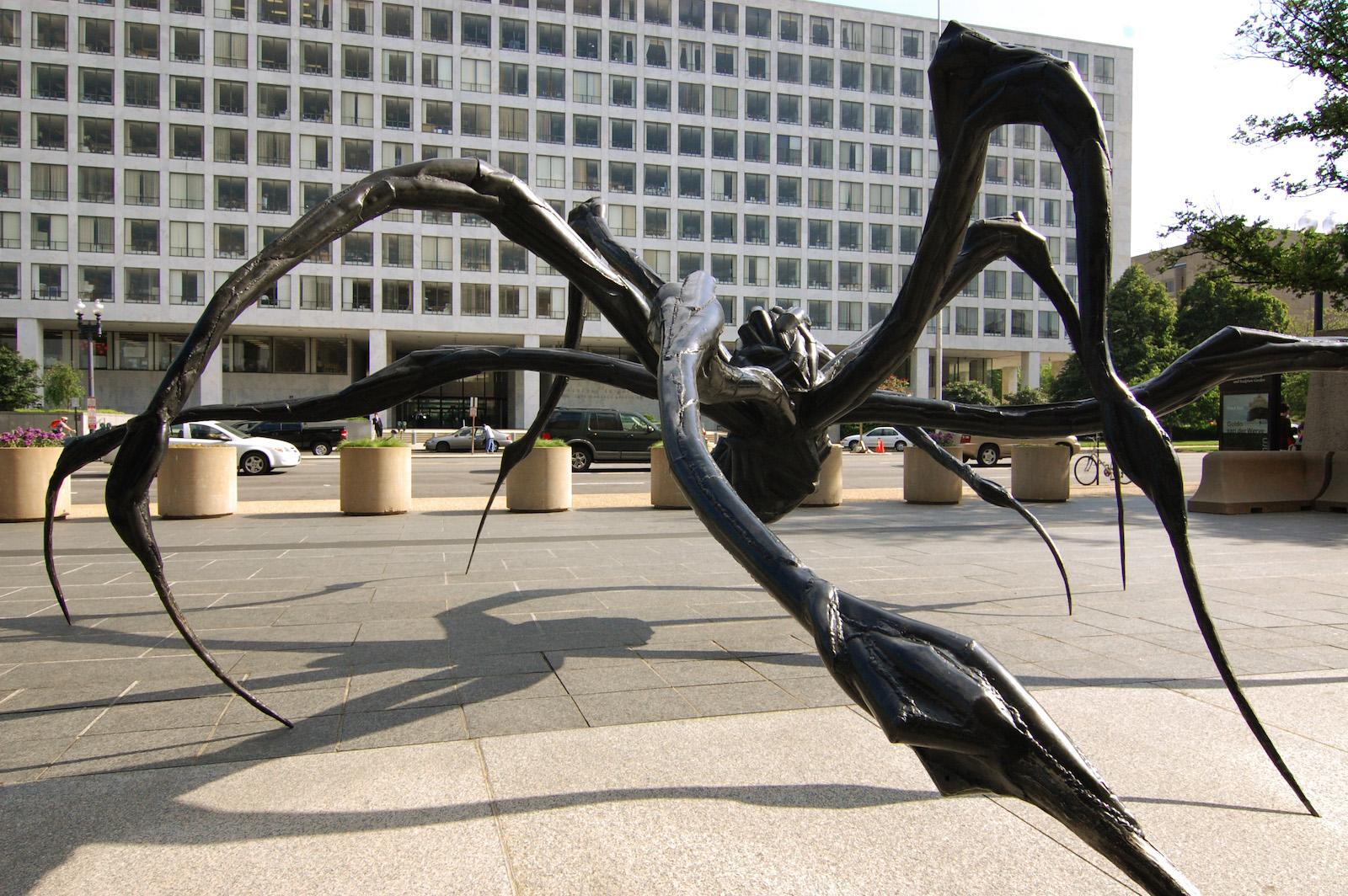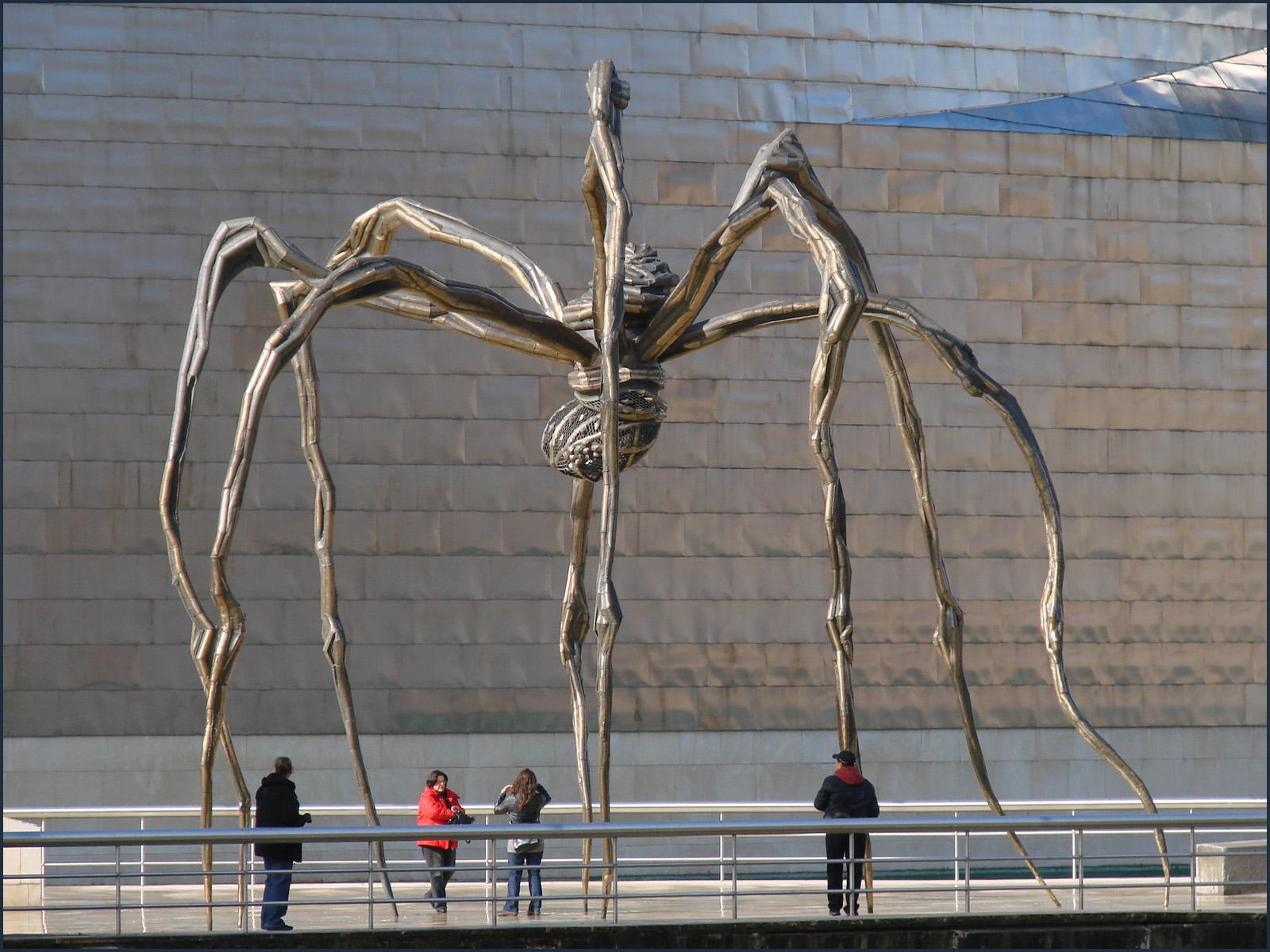Bourgeois’ sculptural series Personnages (1940-45)—for which she first gained notice from the art world—is a great example. In total, the artist made approximately eighty of these Surrealist, human-sized figures. Typically displayed in meticulously arranged groupings, the artist used these surrogate figures to reconstruct personal memories and establish a sense of control over her difficult childhood.
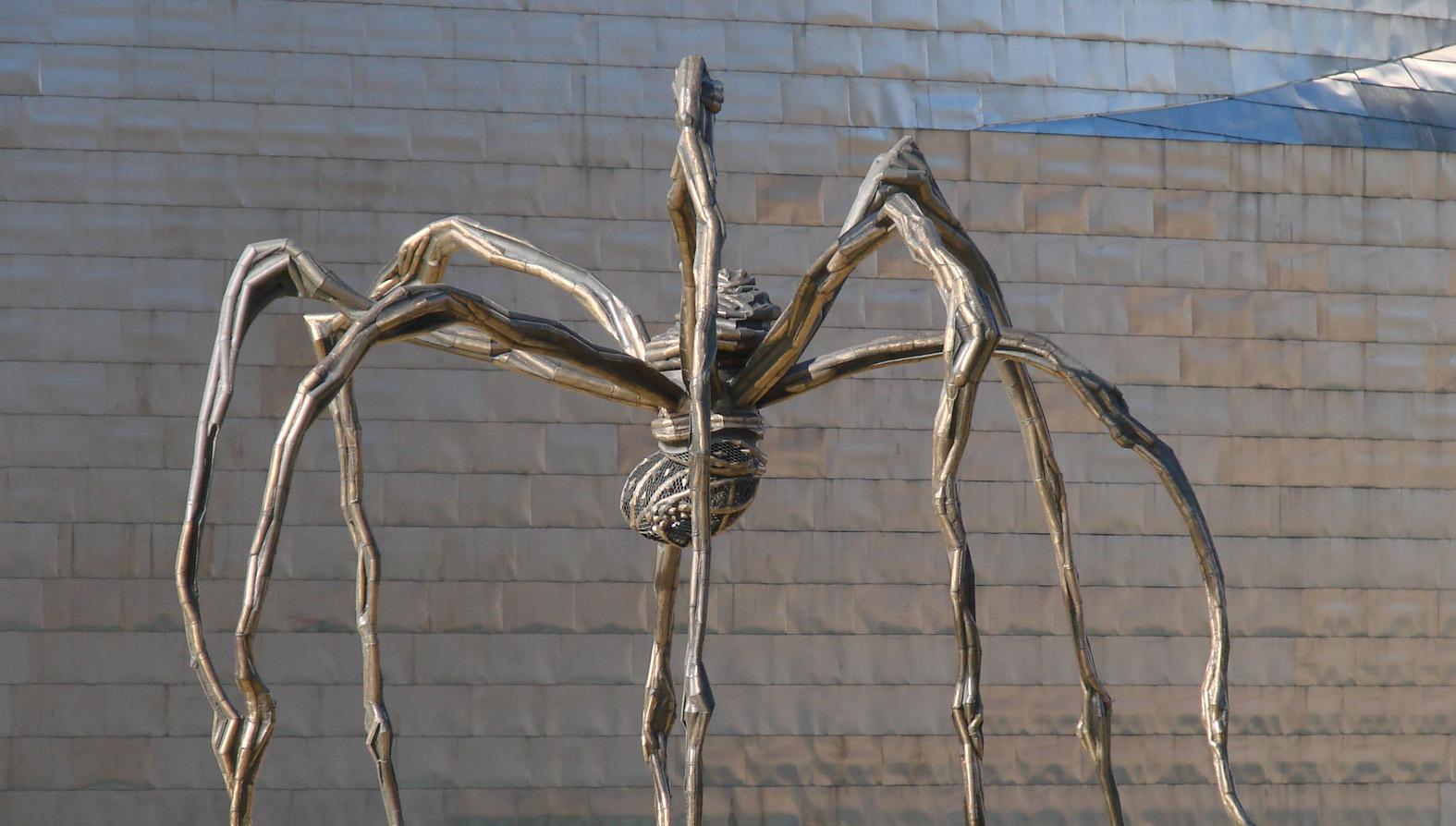
Louise Bourgeois, detail view of Maman, 1999, cast 2001. Bronze, marble, and stainless steel. 29 feet 4 3/8 in x 32 feet 1 7/8 in x 38 feet 5/8 in (895 x 980 x 1160 cm).
French-American artist Louise Bourgeois (1911-2010) is arguably best known for her gargantuan spider sculptures. Though many find them unsettling, the artist has described her arachnids as protectors who provide a “defense against evil.” In this author’s opinion, the most fascinating factoid about these creatures is the personal, maternal symbolism they held for Bourgeois—more on that later.
Bourgeois made a wide array of art throughout her career. As a whole, her artwork seems linked to childhood, familial trauma, and the body. It is also always deeply personal and often biographical.
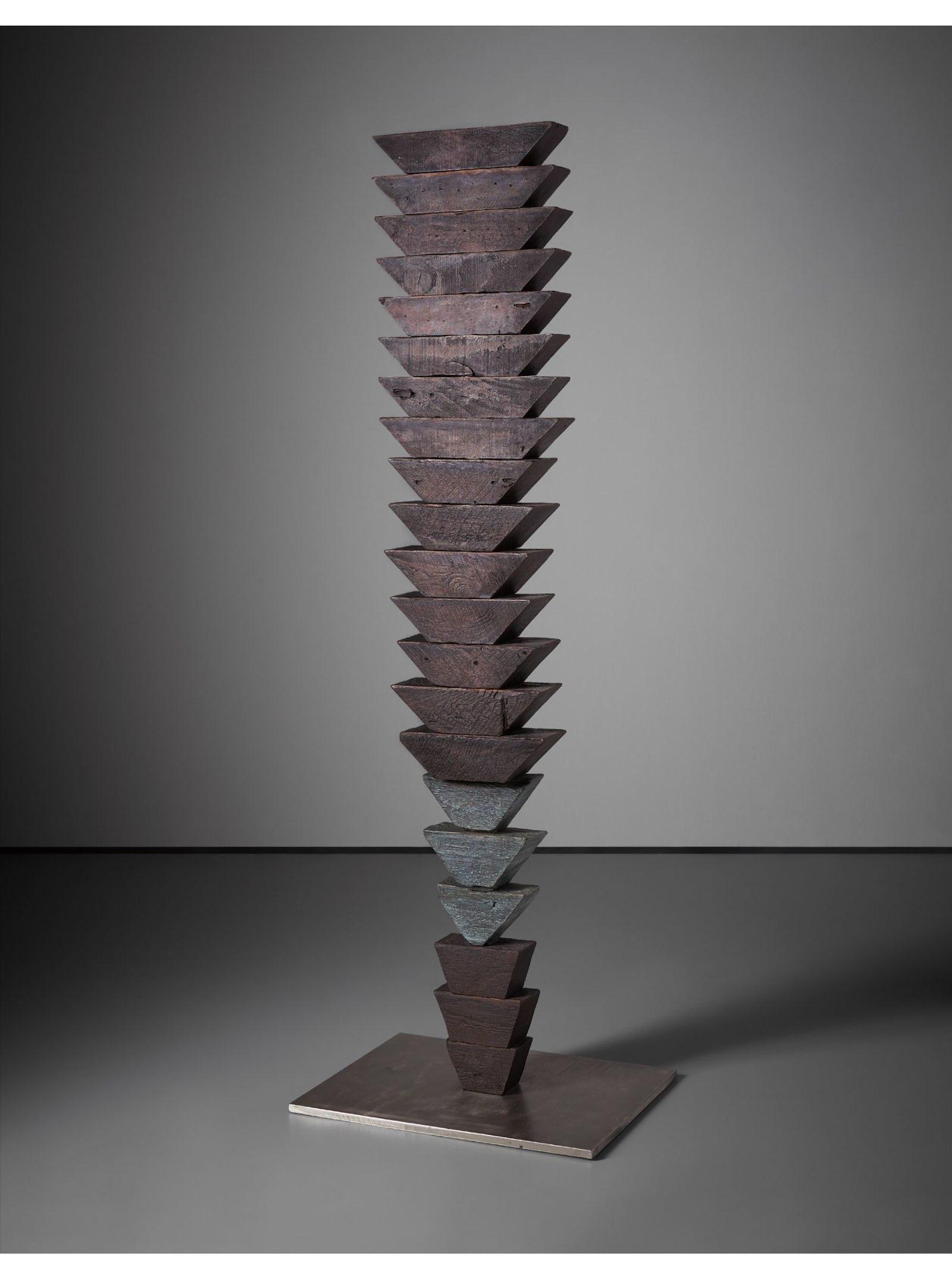
Louise Bourgeois, Untitled (The Wedges), conceived in 1950, cast in 1991. Bronze and stainless steel. 63 1/2 x 21 x 16 in. (161.3 x 53.3 x 40.6 cm).
The artist’s readymades, a Dada artform based on the use of found items, are also uniquely personal. Although many artists of the time selected objects whose original purpose would facilitate social commentary, Bourgeois picked objects that were personally meaningful to her. These objects often populate her Cells, a series of cage-like installations that she began in 1989.
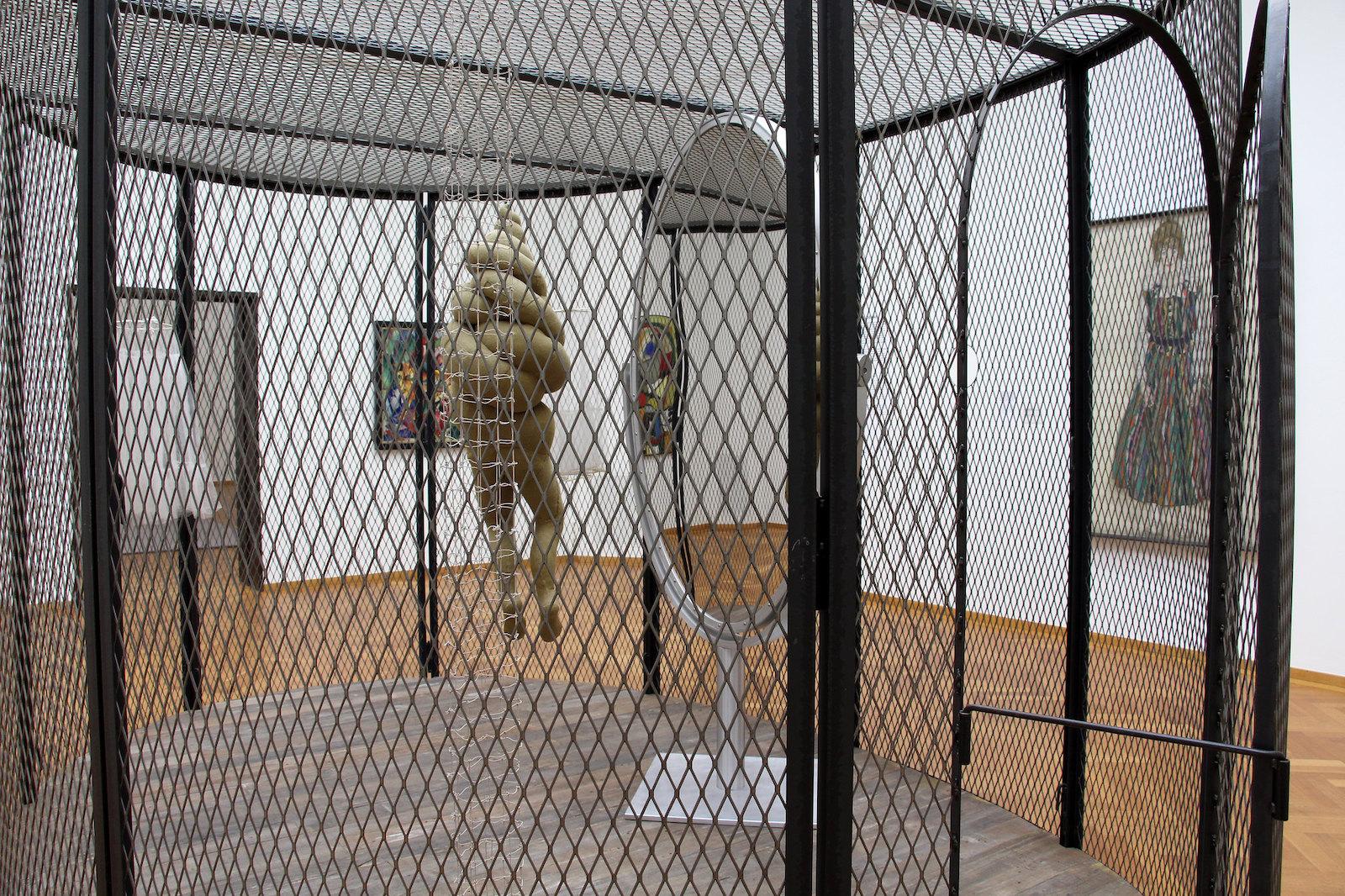
Louise Bourgeois, Cell XXVI, 2003.
In the 1990s, Bourgeois began to make her popular spider sculptures. One of the most famous and looming of these sculptures is actually associated with the artist’s own mother, Joséphine Fauriaux. Entitled Maman—meaning mother—this spider features a bulging egg sac with luminous, marble spider eggs. Many have observed that Fauriaux did her own kind of web-spinning in life, through her professional work mending tapestries.
Bourgeois’ relationship with both of her parents was, perhaps unsurprisingly, complicated. The two struggled with infidelity and her mother was frequently sick for long periods of time. In those moments, Bourgeois often played caretaker for her mother. She died when the artist was only twenty-two-years-old.
Regardless of whether or not you may find Bourgeois’ art unsettling, one thing is undeniable—the artist understood how to capture the essence of dark memories.




